
Tyneham is hidden in a beautiful valley in Dorset where time has stood still for over 60 years.
It’s the forgotten village. Locked in a time warp, nobody has lived at Tyneham since 1943.
This small, isolated village became trapped in time during World War Two when villagers were told by the British government they had to move out to make way for D-Day preparations.

They were given just 28 days notice to leave.
All 102 houses and cottages in the village were evacuated.
Families who had lived in the hamlet for generations were torn away from their rural community. Many had never ventured beyond this idyllic valley in their lives.

It’s hard not to shed a tear as you walk around Tyneham’s deserted, eerie streets.
But this is more than a history lesson. During my visit, I discovered that Tyneham’s remarkable story is one of loss, deception and betrayal.
Leaving Home
Winston Churchill’s War Cabinet requisitioned Tyneham in 1943 with the promise that villagers would be allowed back one day.
The villagers believed Churchill because they felt their sacrifice was in the national interest.

One of the villagers wrote a poignant note as the final group of residents were leaving:
“It’s nearly Christmas, but there’s little cheer as the last of the villagers leave.
“Many leave reluctantly, particularly the elderly, but with the enemy just across the Channel, others are relieved.”
“Ralph Bond was only given notice to clear the valley last month – the same day he learned his son Mark was missing in action.
“His wife Evelyn pins a note to the church door imploring the Army to ‘treat the church and houses with care.’ It concludes: ‘We shall return one day and thank you for treating the village kindly’.”

Reading the army’s original notice to the villagers, I was struck by the huge price that Tyneham was about to pay.
There was no hint of the battle to come – the battle for Tyneham’s survival.
Notice – Southern Command
“In order to give our troops the fullest opportunity to perfect their training in the use of modern weapons of war, the Army must have an area of land particularly suited to their special needs and in which they can use live shells.
“For this reason you will realise the chosen area must be cleared of all civilians.
“It is regretted that, in the National Interest, it is necessary to move you from your homes, and everything possible will be done to help you, both by payment of compensation, and by finding other accommodation for you if you are unable to do so yourself.”
“The Government appreciate that this is no small sacrifice which you are asked to make, but they are sure that you will give this further help towards winning the war with a good heart.”
The villagers were never to return to their homes.
The government broke its promise and never gave Tyneham back to the people who had lived there.

Battles and bullets
After the residents left Tyneham, training for the D-Day landings began in earnest.
The area around Tyneham was already being used for training soldiers and testing grounds for tanks. But operations were stepped up for the war effort.
During the D-Day preparations, the village sustained damage from regular shelling and army manoeuvres. It became a war zone.

When the Second World War ended, something worrying happened. Despite promises, there was no sign that the villagers would be allowed to return home.
The military were keen to hold onto their new training ground.
As the Cold War started, Tyneham village and Lulworth firing ranges became crucial to the government’s defence plans.
As a result, in 1952 the entire valley was compulsorily purchased for £30,000 by the Ministry of Defence.

Broken Promises
But what happened to the 225 villagers?
Increasingly disgruntled, they launched a campaign to claim back their village.
Their slogan was ‘Tyneham Died for D-Day’. Soon the wider public started to pay attention to their plight, but the government was refusing to listen.

In August 1968, Rodney Legg and the Tyneham Action Group held a demo near the army site to protest about the lack of government action.
But the campaign ended up dragging on through years of bureaucratic red tape and political obfuscation.
Former villagers changed tactics and campaigned for the valley to be given to the National Trust as a national heritage site.

But the situation had reached stalemate.
Then, the army annoyed protesters even more by dismantling the historic Tyneham House, moving its valuable stonework to stately homes at Melcombe and Athelhampton.
The hall was left largely in ruins, and the preservation battle had been lost.

At his wit’s end, campaigner and former resident John Gould wrote to Prime Minister Harold Wilson in 1974, lobbying for the village to be returned to the community.
“Tyneham to me is the most beautiful place in the world and I want to give the rest of my life and energy to its restoration…
“Most of all, I want to go home,” he pleaded.
John never came home. He never fully realised his dream. Today he is buried in Tyneham cemetery.

Saving Tyneham
Still, there was no government agreement to reinstate the residents. After years of campaigning, the villagers were fighting a losing battle.
The army was here to stay.
Eventually, residents were forced to settle for an alternative plan, greater access to what had become a ‘ghost village’. They would not be returning to their homes.

The next battle was to preserve what was left of Tyneham and tell its hidden story.
Neglect and military manoeuvres had left much of the village in ruins but conservation volunteers stepped in to rescue what they could.
Over 30 years, they’ve done an incredible job in bringing back to life the spirit, if not the bricks and mortar, of the village.

Inside the Village
The final battle was to open up Tyneham to the public and save its heritage for the nation.
After decades of arguments, the army agreed to provide limited access to the village at weekends in the 1990s. It had been a 50 year struggle for local people.

Today, you can take a tour around the village. Heritage displays tell the story of the families and the individual ruined houses.
It’s a moving and humbling experience to read the tales of their lives.
Most buildings are in ruins but three have been saved and provide an idea of what life would have been like.
St Mary’s Church was one of the first buildings to be refurbished and is now home to a museum which tells the story of Tyneham.

Over at the old farm, there is a real sense of what Tyneham would have been like in the years before the Second World War.
When the army firing ranges fall silent and the tanks stand still, you can still enjoy the tranquility of village life.
The renovated village theatre provides a glimpse of how locals entertained themselves with concerts and amateur drama productions.

I enjoyed a trip to the refurbished schoolroom which feels almost if the scholars have popped out for a break.
You can read their poetry and examine the old school books.
And you can wonder whatever happened to those young people when they left Tyneham in 1943.

The Last Survivor
For many years, Arthur Grant was the last surviving pupil to have been taught at the village school.
When Tyneham was opened up for the first time, only a handful of villagers were still alive to recount the true story of this special place.
Arthur was one of them and he continued to tell the tale of Tyneham and the evacuation of the village.
Eventually, he became the last living resident of the village.
Arthur Grant died in 2010 but did manage to return to St Mary’s Church for the village’s commemoration of the D-Day evacuation.
He is buried in its churchyard, his dying wish for many years, but he did see Tyneham brought back to ‘life’.
Tyneham’s Coastal Paradise
One of Tyneham’s hidden secrets is its coastline and the stunningly beautiful Worbarrow Bay.
Take a 15 minute walk from the village down to the beach where the landscape is as unspoiled as it was in 1943.

On the way you’ll see the remains of abandoned cottages where the inhabitants were forced out. Most had worked in the fishing industry or farming.
The only bonus of Tyneham being cut off from the world for 50 years is that this coastline has been unspoiled by commercial tourism.
Walk to the top of the headland cliffs – beyond the army target practice boards – for stunning views along Dorset’s Jurassic coast.

Nature has also reclaimed the land here and there are carpets of wild flowers, free of pesticides and ‘industrialised’ farming practices.
I was completely taken aback by the intensity and sweeping expanses of wild garlic. It made me feel quite intoxicated and giddy.
I’m told that the natural diversity here is something quite special. It’s also a fantastic place for a perfect picnic.

Tyneham’s Foreign Land
The author L.P. Hartley once wrote, “The past is a foreign country, they do things differently there”.
Nowhere could this be more true than Tyneham. Walking around the village, it feels as if the clocks stopped in 1943. Forever stuck in time.

Bye laws prevent the commercial development of Tyneham which is a blessing for anyone who likes authentic, unspoiled landscapes.
There are no gift shops, cafes, pubs or hotels. No cars go beyond the car park. The bay can only be reached on foot.
There is, simply, the sound of silence.

When Tyneham is closed to the public, the only noise is the Lulworth firing ranges, owned by the Ministry of Defence.
Tyneham’s story will break your heart. Even the hardest hearts cannot be unmoved by the sacrifice of the villagers.
You can almost feel their presence in its deserted homes, their hopes and fears. Their daily lives are brought back to life as if they were here only yesterday.

What happened here was an outrage – but in times of war this could happen anywhere.
It’s a humbling lesson that we should take away from this fantastic place. We should never forget the 225 people who lost their homes and community. Their loss is our gain.
Tammy’s Travel Guide: Tyneham Village
Tyneham village is located close to East Lulworth on Dorset’s Jurassic coast in southern England.

As you drive across the landscape to Tyneham, there are gorgeous views across the Dorset countryside.
Don’t be surprised to see the wrecks of burned out tanks and vehicles littering the landscape, resembling a film set from Mad Max . These are part of army training operations during the week.
Lulworth Range walks and Tyneham village are open to the public most weekends and Bank Holidays.
There are many fantastic Range Walks – keep to the marked paths between the yellow banded posts. Walking routes can be found on the Dorset coastal walks website
For general information – phone 01929 404714.
Watch my slide show about Tyneham village and its history
Before travelling, it’s important to check out the opening times on the Tyneham Village website
I had two attempts to visit the village because of firing operations by the armed forces. Don’t be tempted to venture into the village when firing is taking place!
Check Before You Go…
Photo Gallery: Tyneham’s Abandoned Village











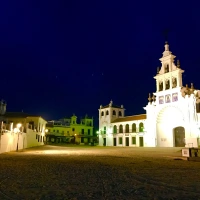




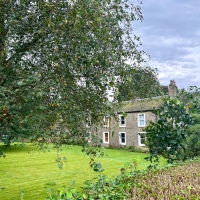
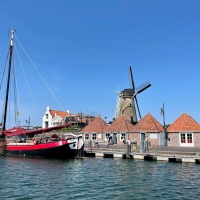
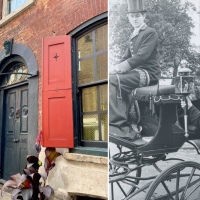
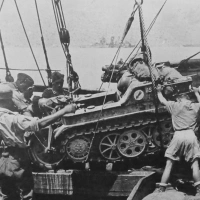
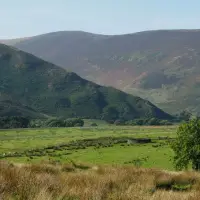

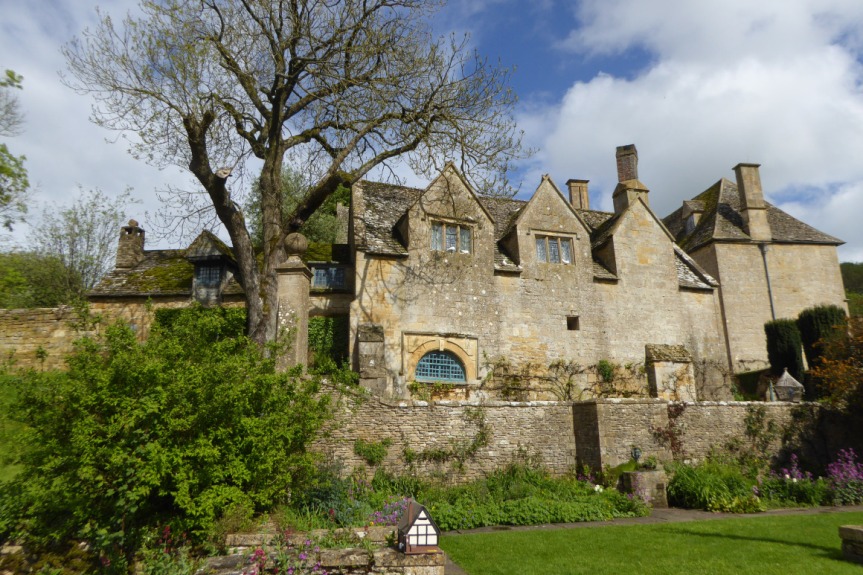



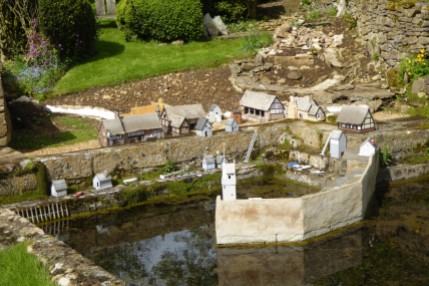



Thanks for an excellent account of this ‘lost’ village. Great stuff
I just finished reading The House at Tyneford, by Natasha Solomons (2011). The setting is the village of Tyneham in the 4 years leading up to the military’s acquisition of the village and eviction of its residents.
That sounds like a good read. Thanks for the top tip!
It’s also called The Novel in the Viola . . . so don’t buy both. 😀
Loved seeing the village come to life in your post. Thanks!
Great website and great info. Thank you for sharing!
Thanks, Loulou. It’s a remarkable place and a very sad story… but such a beautiful spot today.